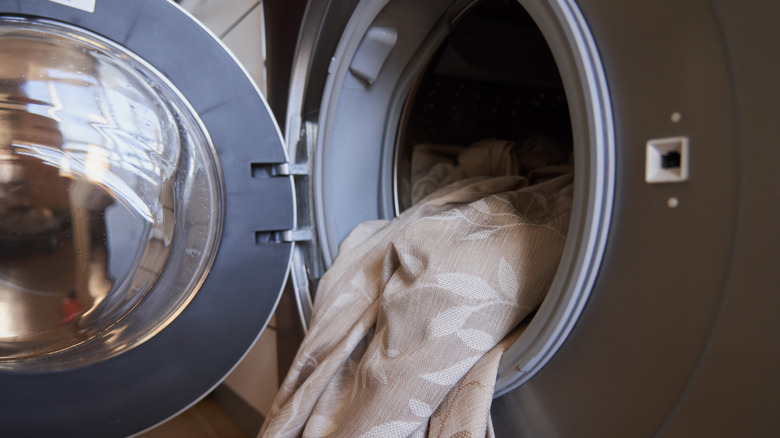How To Clean And Regularly Maintain A Hookless Shower Curtain
If you have switched to a hookless shower curtain, you are likely very excited to no longer need to fumble around with the hooks that the traditional variety relies on. While the process of getting your shower curtain on and off of the rod may be simplified, you still need to know how to clean and regularly maintain your hookless shower curtain. Like most shower curtains, they should be washed at least once a month. There are also maintenance tasks you should do after each use to get the best results and ensure longevity.
There are a few types of hookless shower curtains, and the material determines how you should wash them. The best way to clean a fabric hookless shower curtain is to remove the liner and put the curtain in the washing machine on a gentle cycle with warm water. Use any detergent of your choice. If the liner is machine washable with similar instructions, you can add it to the wash as well. After the wash cycle, tumble dry the curtain on low or allow it to air dry. If your hookless shower curtain is made entirely of plastic, clean the curtain by simply wiping it with a damp cloth and dish soap before allowing it to dry. However, if you notice mold or mildew growing in your bathroom and on your curtain, you may need to do a more intensive cleaning to remove it.
How to wash mold and mildew out of a hookless shower curtain
Whether or not you have a mildew-resistant shower curtain, you might find yourself needing to wash out pesky fungi due to poor bathroom ventilation. Check the label on your curtain before beginning treatment to be certain of the recommendations for your material. For a fabric hookless shower curtain, you can use non-chlorine bleach. This will help kill the mold spores in the washing machine. For a plastic non-polyester curtain, you can spot treat with bleach or soak the curtain in warm water with one cup of bleach for about 20 minutes.
Once your curtain is clean and dry, take advantage of the hookless design to easily hang it back up, and switch your focus to caring for it between washes. After each shower, you should shake excess water off of the curtain and move it to the outside of the tub so it can dry more thoroughly. If you have a separate liner, washing the curtain is a great opportunity to spot clean the liner and remove any built-up grime. This will prevent your freshly washed shower curtain from quickly becoming dirty again from contact with the liner. Consider pre-treating your shower curtain with vinegar to prevent mold and mildew in future, and make sure you have adequate bathroom ventilation. Just make sure you do not mix vinegar and bleach at any point when cleaning, as it produces peracetic acid, which is highly dangerous and corrosive.

